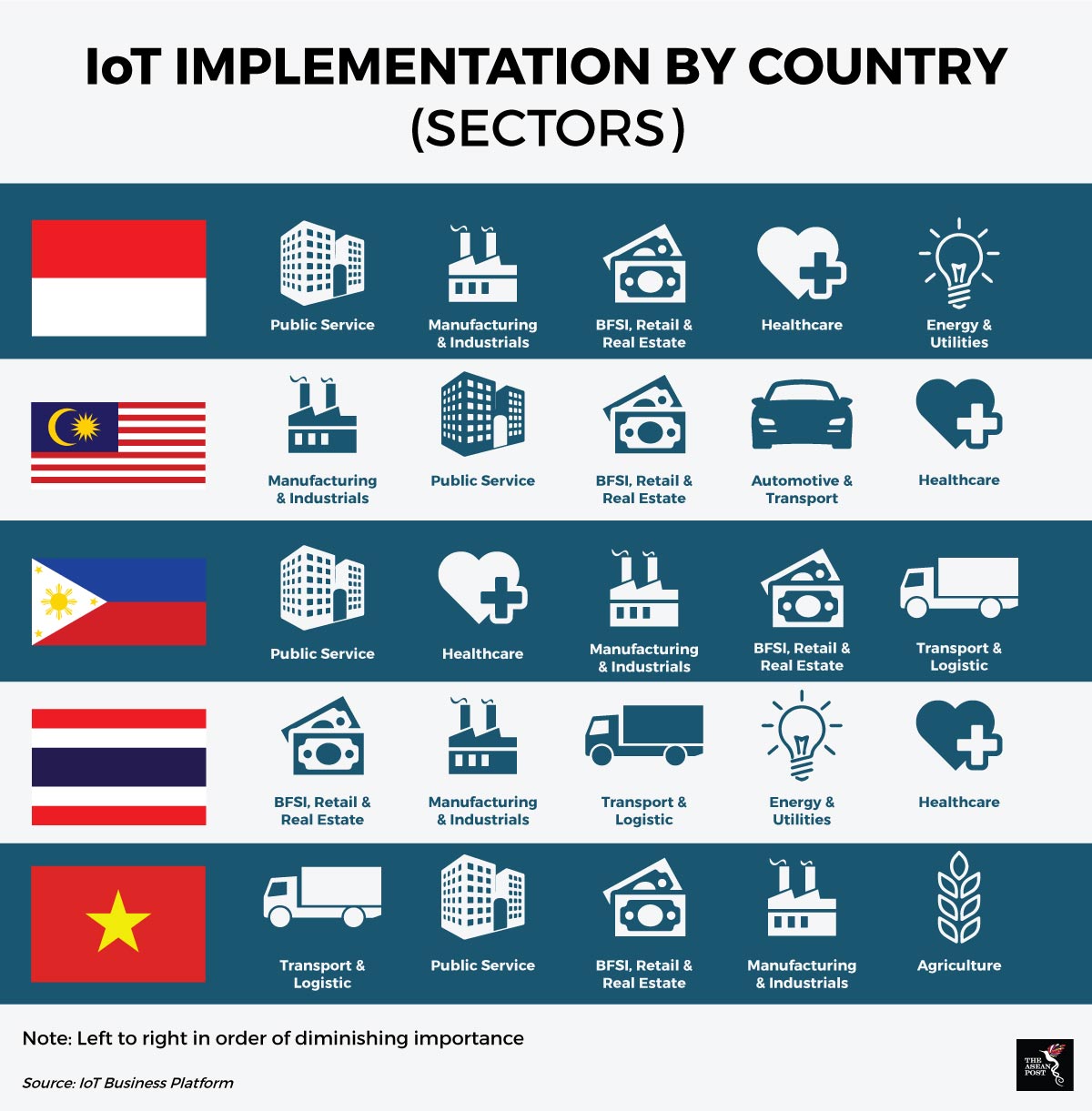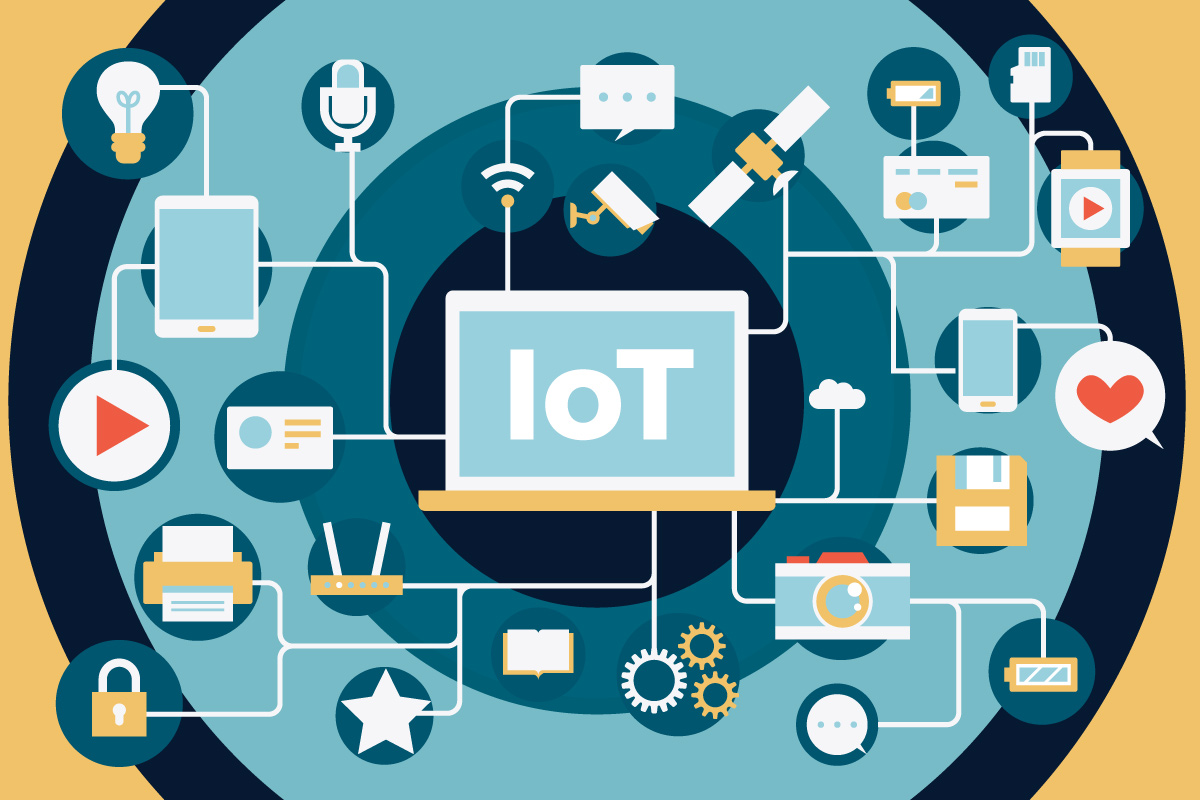The Internet of Things (IoT) comprises “a global network of computers, sensors, and actuators connected through Internet protocols,” according to Cuno Pfister, author of ‘Getting Stared with the Internet of Things’.
Meanwhile, the Fourth Industrial Revolution can be “characterised by a range of new technologies that are fusing the physical, digital and biological worlds, impacting all disciplines, economies, and industries, and even challenging ideas about what it means to be human,” according to Professor Klaus Schwab, founder of the World Economic Forum.
Along with automation, robotics, artificial intelligence and a myriad of others, IoT is one of the technologies that would help ASEAN participate in the Fourth Industrial Revolution, which could increase wealth, empower SMEs and provide more inclusive forms of economic growth for its members.
Each ASEAN country is currently developing IoT at its own pace.

In Thailand, where most IoT spending is in logistics and manufacturing, the Thailand 4.0 initiative serves as a guide. In line with this initiative, the Thai government in 2017 announced plans to set up an Internet of Things (IoT) Institute to develop IoT in automation and robotics, bio-energy, healthcare and aerospace, among other sectors. The time is right because of higher smartphone use and the availability of a strong network of fourth-generation broadband and data centres.
Malaysia set up the National Internet of Things (IoT) Strategic Roadmap in 2015 to lay the groundwork for IoT adoption as a way to boost national income by US$11,000 billion and generate 14,000 high-skilled jobs. Government agencies like the Malaysia Digital Economy Corporation (MDEC) has been tasked with promoting the IoT agenda and have done so, in part, through partnerships with LoRa Alliance. Meanwhile, local companies have also set up incubators to develop and test new IoT tech, such as Maxis’ development of the mDrive app for round-the-clock vehicle monitoring.
Malaysia’s 2018 budget also includes a RM190 million allocation for the development of smart classrooms for education, and RM245 million in grants for businesses to upgrade their manufacturing processes. Incentives to develop IoT are there, but progress seems slow, according to a local newspaper report last year.
Meanwhile Singapore’s development of the IoT is in line with its long-term goals to become a Smart Nation. Interconnectivity is a large part of the agenda to digitise mobility, healthcare, financial services, and energy management. It is also key to its strategy to address labour shortages in the long term. Foreign firms like Dell and Siemens set up labs in Singapore to develop IoT and test out the potential for their tech there.
Indonesia, meanwhile, is using the IoT to develop smart cities. Indonesia’s three smart cities in Jakarta, Bandung and Makassar have implemented IoT solutions like smart lighting in Bandung and the Qlue app for Jakarta Smart City which allows citizens to file complaints and reports for central government officials to respond to in real time.
In Vietnam, IoT applications are limited because IoT is still in its developmental stage there. The government has taken baby steps by opening its first IoT lab in 2016, located at the Hoa Lac Hi-Tech Park in Hanoi. The lab will support technology start-ups which build applications and solutions in Vietnam by providing them with memberships, services and resources for free. The potential for Vietnam to develop its manufacturing sector via IoT is huge.
IoT development and adoption in ASEAN is growing and could change the playing field altogether. Competing on the fourth industrial level is a whole different ballgame and every party needs to play their part. Governments need to foster awareness of the benefits of the IoT to businesses and provide the necessary funding and expertise. Businesses, on the other hand, need to take advantage of every available opportunity to grow their IoT expertise and implementation because they stand to gain the most when the fourth industrial revolution takes off.
Recommended stories:
